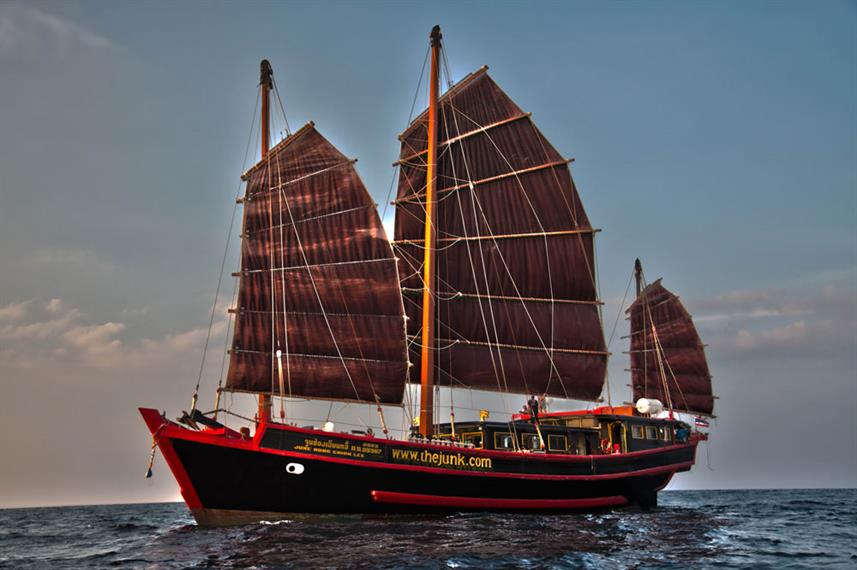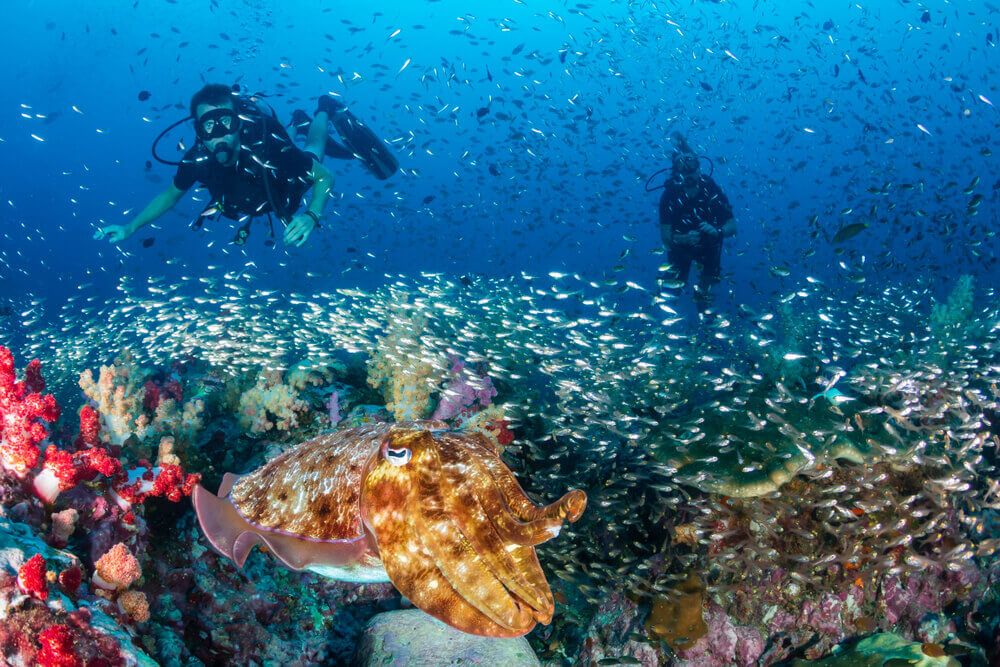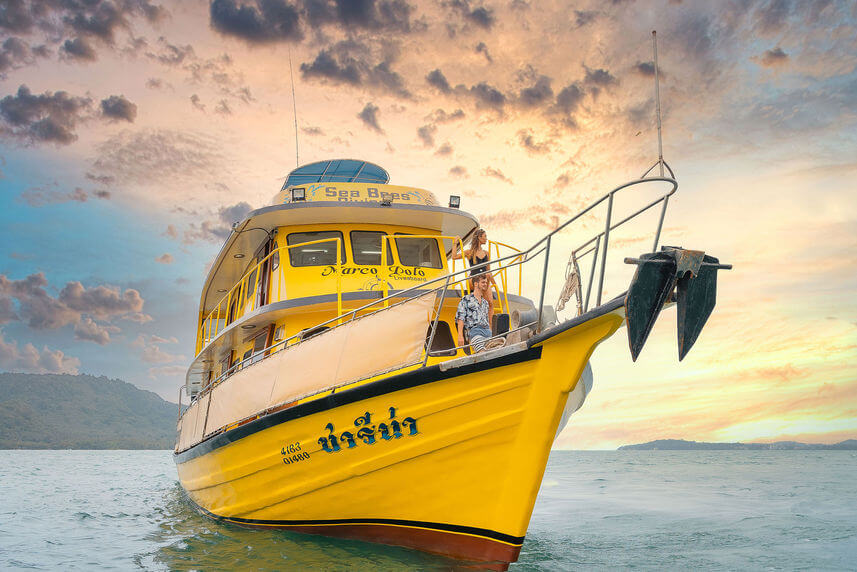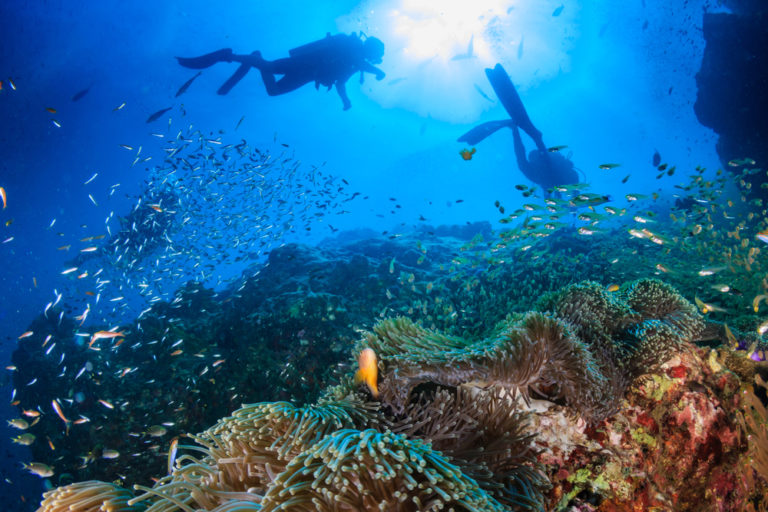
Renowned for incredible dive sites with superb coral reefs and iconic marine animals including leopard sharks and manta rays, Thailand is a scuba diving paradise.
It’s also one of the cheapest places in the world to learn to dive!
But here’s the thing: Thailand is a big country with two distinct diving regions – the Andaman Sea and Gulf of Thailand; which have opposite diving seasons!
Plus, straddling the mighty Thai mainland’s coasts are countless islands; big and small, each one offering a totally unique vibe and dive sites.
In this whale shark of an article we describe the very best diving destinations of Thailand.
We’ll also go over vital info to know before you go, including dive seasons, prices, diving centres vs liveaboards and more.
Read on or jump to our main page on the Best Thailand Liveaboards.
CONTENT:
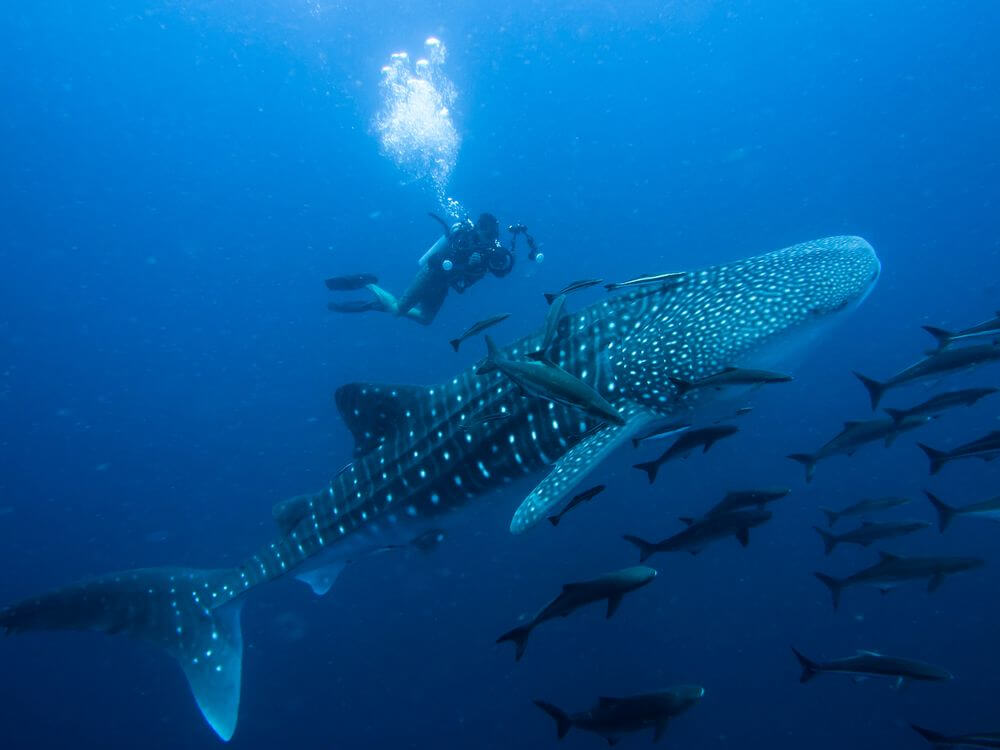
Diving Centre or Liveaboard
If you’re a scuba diver who already knows the difference between a liveaboard and diving school, skip to the next section on The Best Diving Destinations of Thailand
- Liveaboard – A boat that’s been specially outfitted for scuba diving and tours the very best diving destinations of a region over a period of anywhere from a few days to a couple of weeks. The dive sites that a liveaboard visits are usually too remote for diving schools to access, meaning they are more pristine and devoid of crowds. Liveaboards vary a lot in price and facilities – some are like floating backpacker hostels for divers whereas others are luxury vessels with jacuzzis, spas and private balcony cabins! You can check out reviews of the best Thailand liveaboards here!
- Diving Centre / School – Set in a fixed location, a diving centre or school offers daily fun dives within the local area as well as teaching scuba diving courses. Many are also resorts and offer discount on food and accommodation to scuba diving customers.
Best Diving in Thailand: Destination Guide
Andaman Sea or Gulf of Thailand?
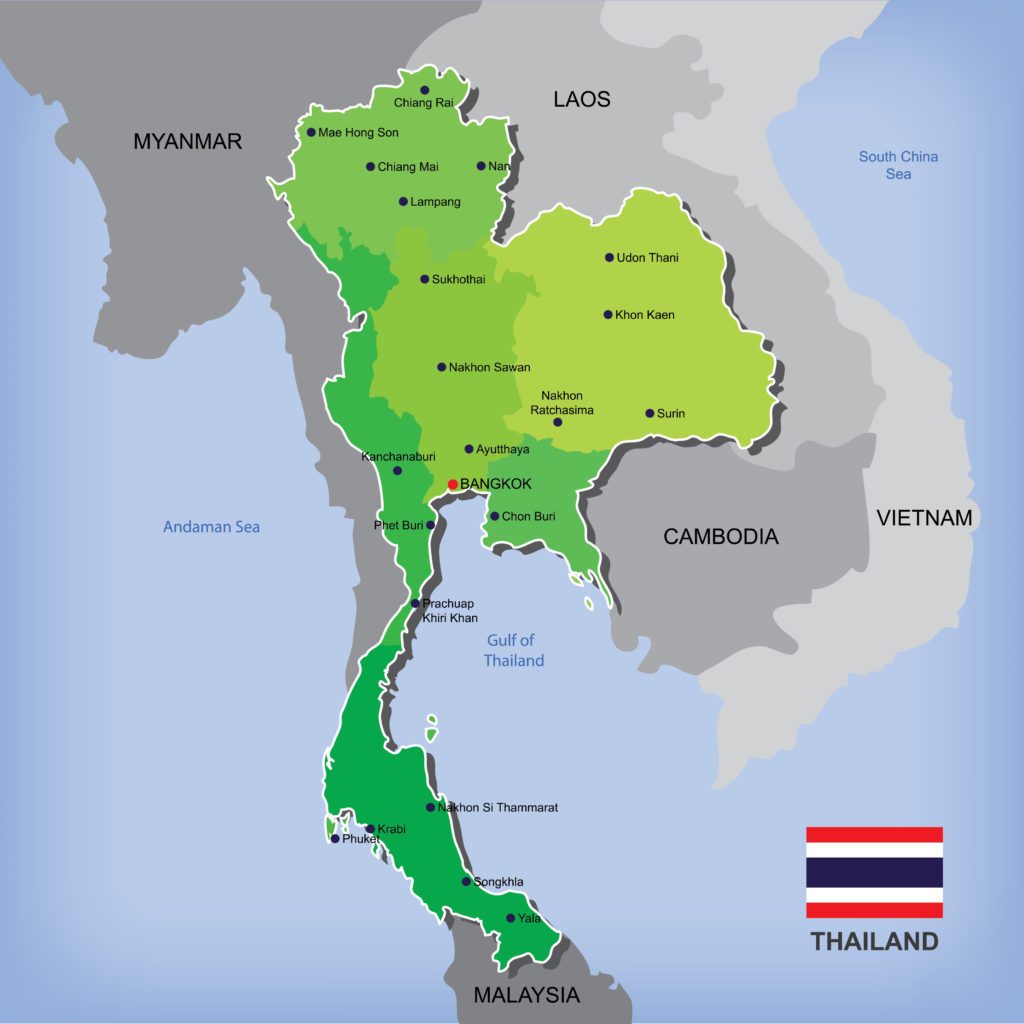
Andaman Sea
Located to the west of Thailand, the Andaman Sea is home to some of the hands down best islands in Thailand, including the legendary Similan Islands, the Surin Islands and the Koh Phi Phi Islands. Most Thai liveaboards operate in the Andaman Sea – there are also some great diving schools and centres here.
Diving Season:
- November – May marks the best time to dive in the Andaman Sea in terms of maximum water visibility and calm conditions.
- March and April – water visibility is somewhat reduced due to huge plankton clouds occurring here at this time of year, however these attract Manta Rays and Whale Sharks!
- June – October marks the monsoon period in the Andaman Sea, meaning choppy conditions and low visibility. Liveaboards don’t operate during monsoon period.
Best Scuba Diving Destinations in the Andaman Sea:
Located to the west of Thailand, the Andaman Sea is home to some of the hands down best islands in Thailand, including the legendary Similan Islands, the Surin Islands and the Koh Phi Phi Islands. Most Thai liveaboards operate in the Andaman Sea – there are also some great diving schools and centres here.
1) Similan Islands
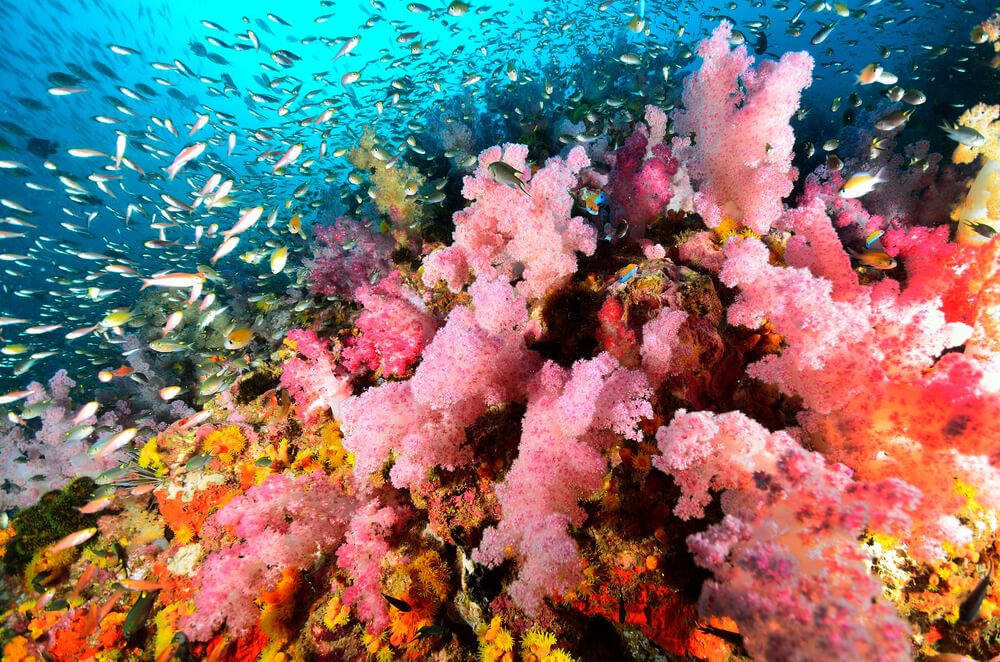
Pros: Liveaboards
Liveaboards
Cons:
Diving Schools/ Centres
The Similan Islands are a small archipelago of eleven granite boulder islands, which together form the legendary Koh Similan National Marine Park.
The islands – which are bordered by white sand beaches, are covered in lush jungle, which is home to an incredible ecosystem of bats, insects, reptiles and tropical birds.
But it is the crystal clear waters surrounding these islands, that makes the National Park famous as one of if not the best place to scuba dive in Thailand.
With immense wall drop offs, mysterious caves, exciting swim throughs and mighty boulder rock formations, the underwater landscape here is a perfect anchoring point for the diverse and healthy coral reef that grows in abundance thanks to the areas geographic isolation and special protection status.
The marine life to be found among the reefs is incredible and includes countless reef fish, molluscs and crustaceans. Scuba divers also have a great chance of spotting turtles, leopard sharks, manta rays and whale sharks.
All this makes for stunning diving sites suitable for both new divers and advanced divers alike.
With no overnight accommodation on the Similan islands, the only way to scuba dive here is via liveaboard.
Find out more about Thailand Liveaboards and the Similar Islands
2) The Surin Islands

Pros:
Liveaboards
Cons:
Diving Schools/ Centres
One hundred kilometres north of the Similan Islands, lies the Surin Islands; an archipelago of five small islands which together with their surrounding waters, form Mu Ko Surin National Park. Of this protected area, one hundred and four kilometres squared – or eighty percent, is ocean.
The National Park also includes Richelieu Rock, which lies about 10km southwest of Ko Surin and is commonly hailed as one of the best ten dive sites in the world and the easiest place in southeast asia to spot a whale shark.
The Surin islands are even more isolated and off the beaten track than the Similan Islands; the diving here features pristine coral reefs as well as conditions that are suitable for a range of divers with everything from adrenaline soaked drift dives and cave dives to shallow dives in stunning coral gardens.
This is another place that’s great for spotting large pelagic species including mantas and whale sharks (at the right time of year) and some lucky divers even spot brydes whales as well as whitetip reef sharks.
The Surin Islands hosts two small communities of the small ethnic Mokey minority, known as “Chao Lay” or “Sea Gypsies”, who still set up temporary camp on these islands throughout their seafaring nomadic lifestyle, which has remained unchanged for thousands of years.
As with the Similan Islands, it’s only possible to reach the Surin Islands with a liveaboard. Find out more about the Surin Islands by clicking the button to the left!
3) Koh Phi Phi Islands
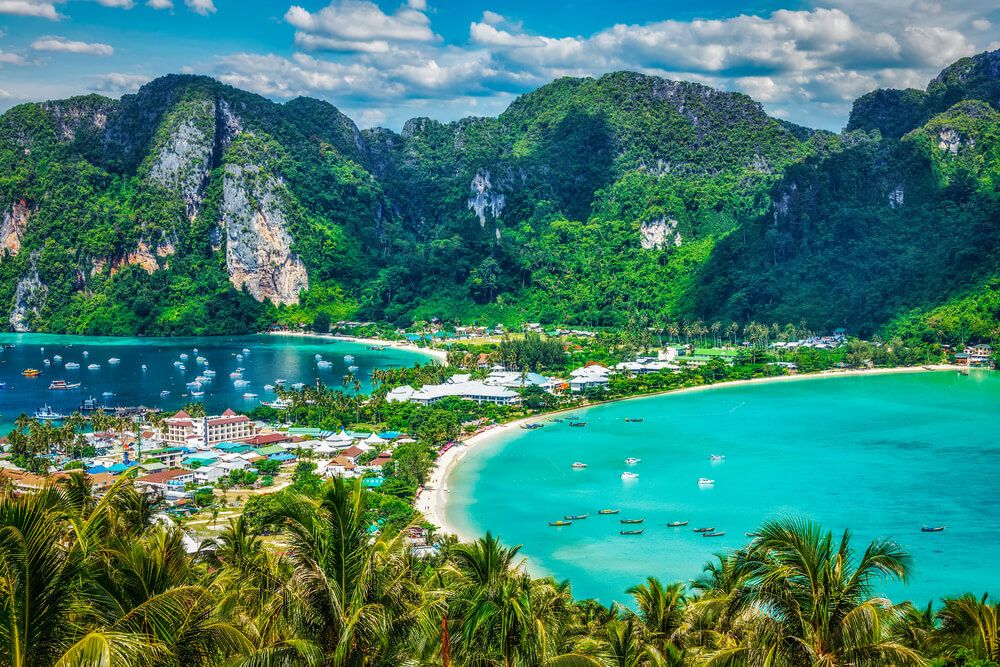
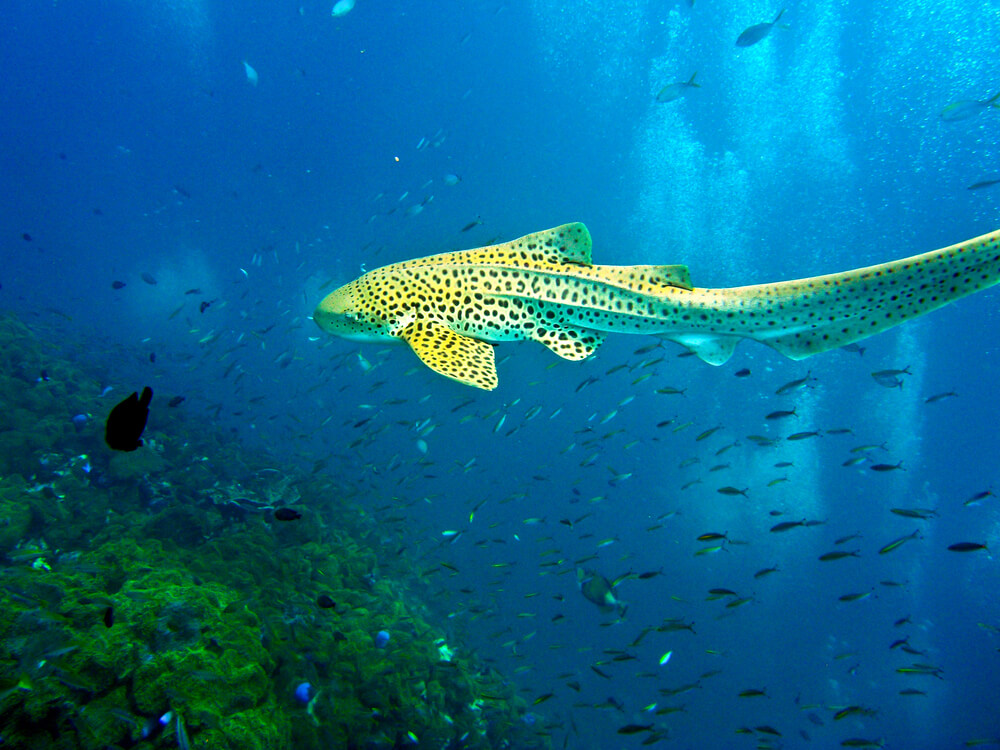
Pros:
Liveaboards
Pros:
Dive Schools / Centres
Located within the mystical Krabi Province is the visually stunning six island archipelago of Phi Phi.
With towering limestone cliffs that are scattered with beaches, coves and bays to form a vivid array of dramatic landscape, it’s easy to see why the Koh Phi Phi islands are regarded as the most beautiful island group in the world.
There are countless dive sites around this archipelago which is known for excellent coral reef and superb marine life biodiversity. This is a great place for spotting numerous species of reef sharks including black tip reef sharks and leopard sharks (it’s probably the best place in the entire country to see leopard sharks!).
From March to April, large pelagics including manta rays and whale sharks also make an appearance.
For centuries Koh Phi Phi has been an important cultural melting pot for Thai and Chinese Buddhists, Moken, Muslims and now backpackers. That’s why unlike the Surin and Similan Islands, Koh Phi Phi has a fair bit of tourist infrastructure with a range of accommodation options and adventure activities including trekking and water-sports.
Phi Phi is perhaps the most popular diving destination in all of Thailand. Some Thailand diving liveaboards include this archipelago on their itinerary, but there’s also a wide variety of dive centres, dive resorts and schools on the islands themselves.
Click the button to the right, to read more about diving the Phi Phi Islands!
Gulf of Thailand
A shallow northwesterly inlet off the southern and eastern coasts of Thailand, the Gulf of Thailand is the region of some of Thailand’s best alternative diving islands, including Koh Tao; the cheapest place to get open water course certified.
Diving Season:
Located to the west of Thailand, the Andaman Sea is home to some of the hands down best islands in Thailand, including the legendary Similan Islands, the Surin Islands and the Koh Phi Phi Islands. Most Thai liveaboards operate in the Andaman Sea – there are also some great diving schools and centres here.
- March – September: Peak diving season. Typically July and August offer the clearest waters with the best visibility.
- April – May: Best time for seeing whale sharks and manta rays at the cost of reduced water visibility due to the clouds of plankton that gather at this time of year and draw large filter feeding pelagics in.
- October – February: The monsoon period in the Gulf of Thailand results poor water visibility and choppy waters. Many diving schools do still operate and there are still some days with good diving conditions – but these can be sporadic and far between.
Best Scuba Diving Destinations in the Gulf of Thailand:
1) Koh Tao
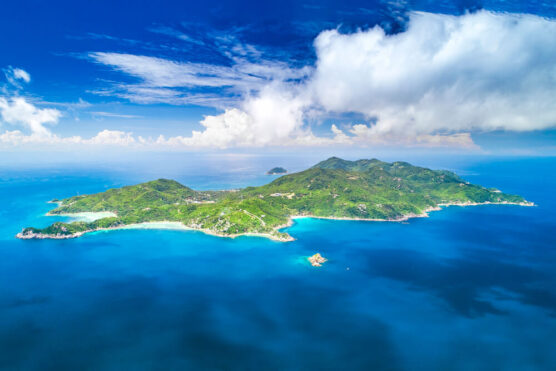
Pros:
Diving Schools / Centres
Cons:
Liveaboards
Koh Tao; a beautiful twenty one kilometre squared island, is among the cheapest places to scuba dive in Thailand as well as the cheapest place to get certified in the world.
Whereas part of Koh Tao is home to a vibrant party scene filled with backpackers, beach bars and hostels; the rest is mostly claimed by jungle, with a few much quieter accommodation options and epic viewpoints scattered throughout.
The variety, cheap diving and friendly atmosphere make Koh Tao one of the most popular holiday destinations in Thailand. It is a great place to complete any PADI course.
There are many diving centre and resort options on Koh Tao for every kind of diver; many have decades of experience dealing with first time divers learning to dive.
Although the coral reef of Koh Tao is not as healthy as they are around the Similan and Surin islands or the Phi Phi islands; there is still a wide variety of exciting and different dive sites around this island, including wreck diving, wall dives, drift dives, deep dives and more, making this an ideal location to hone and develop your scuba skills.
Click on the button below to check out the Diving Squad Guide to Koh Tao Diving:
2) Ko Chang
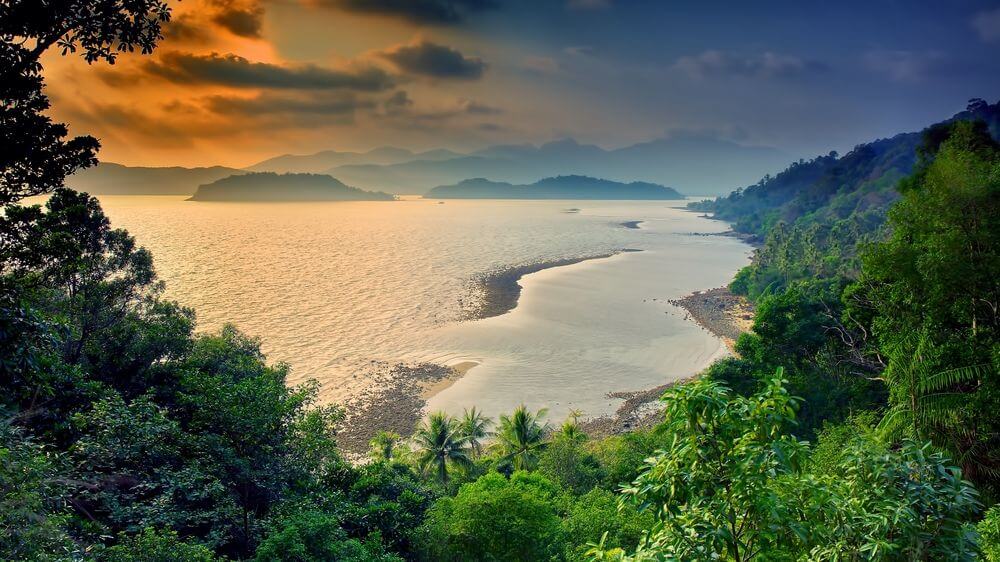
Pros:
Diving Schools / Centres
Cons:
Liveaboards
Thailands second largest island: Koh Chang, has a number of spectacular local dives sites as well as being just an hour away from Koh Rang National Marine Park (perfect for visiting with a dive boat on day trips!)
At Koh Rang, divers can swim among giant rocky pinnacles that are adorned with hard and soft corals as well as frequented by huge pelagics including tuna, great barracuda and cobia.
Koh Rang is also the resting place of Thailand’s largest wreck dive: the 117 meter long HTMS Chang which is covered in hard and soft corals – whereas it’s cabins, briefing rooms and main holding area are teeming with quirky critters including squid, grouper, batfish, frogfish and octopus.
There are many great dive sites around Koh Chang as well, comprised of various underwater pinnacles, ridges and canyons that are home to many reef fish, rays, molluscs, crustaceans and turtles.
Koh Chang is a somewhat off the beaten track dive destination, being far less frequented than Koh Tao. It is oozing with bohemian vibes and an incredibly friendly and laid back expat and backpacker community, with a number of fun extra activities including trekking, motorbike riding and tropical bird watching.
Click the button to check our our Ultimate Guide to Koh Chang scuba diving in Thailand:
Travel Info for Thailand
Price of Diving in Thailand
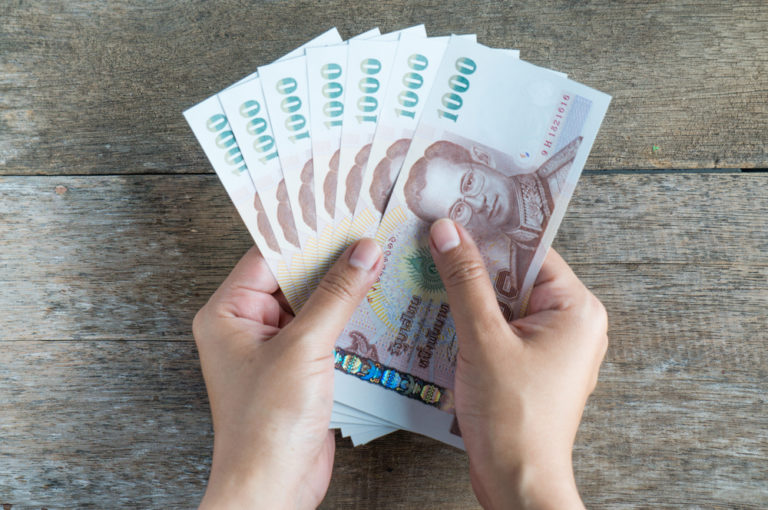
When it comes to scuba diving, Thailand is one of the cheapest countries you can do it it in world – along with the Philippines. (Thailand and Philippines are two very similar and frequently compared dive destinations in southeast asia!).
- For the PADI Open Water + PADI Advanced Open Water Scuba Diving Course package combo, divers can expect to pay around 17,450 Thai Baht ($529.30) or less on the cheaper islands such as Koh Tao.
- The cost of a day fun diving including 2 dives and scuba equipment rental is 4100 THB ($124.36). Add in an extra dive and it’s still a low cost for diving, at around 4700 THB ($142.56).
- The average cost of a 4 day liveaboard trip in Thailand can be as low as 19,800 THB ($600,18). or up to 50,000 THB ($1515.61). Relatively speaking…that’s some cheap liveaboards! See the Liveaboard in Thailand for more details.
Diving Insurance in Thailand
Just like you have to get travel insurance to cover medical bills and accidents whilst abroad, as a scuba diver, you also need to have diving insurance to cover you for any accidents that occur during a dive.
There’s several reputable scuba diving insurance companies out there, offering different packages; for example, some but not all include travel insurance as part of their main deal.
If you want to find out more, you can check out this epic page on the best diving insurance where we break down, compare and review the very best scuba diving insurance companies of all time so you don’t have to:
5 Reasons you will love Scuba Diving in Thailand
Insane Diving
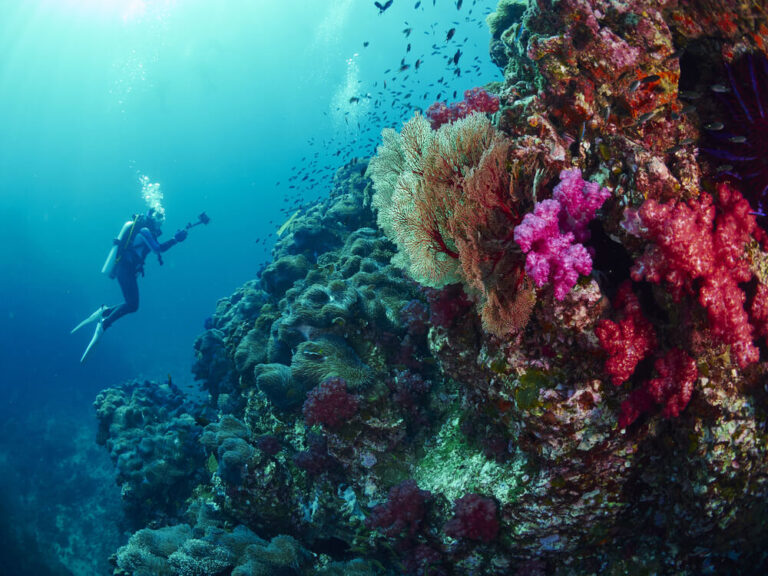
Caves, shipwrecks, pinnacles, wall drop off’s, boulders, deep expanses – Thailand has it all!
With incredible national marine parks such as the Similan and Surin Islands, world famous diving sites such as Richelieu Rock or the HTMS Chang wreck of Ko Chang, leopard shark paradise of Koh Phi Phi and even mind warping psychedelic UV night diving experiences in Koh Tao, Thailand is packed with an insane variety of superb dive sites.
This, combined with the low prices of diving, makes Thailand the world’s most popular holiday destinations among scuba diver backpackers.
Incredible Weather
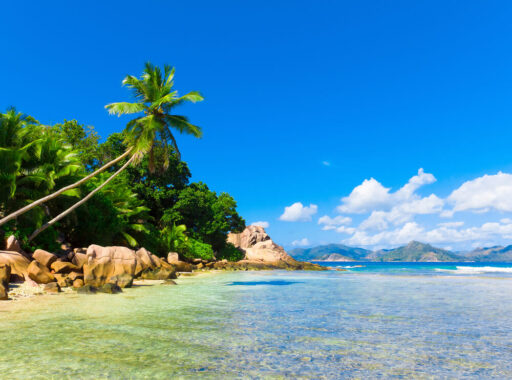
Two things Thailand has in abundance: heat and sun. All year round. Temperatures stay relatively consistent, with average air temperatures typically reaching between 26°C – 32°C.
This makes not only for blissful comfort on land it also makes the water temperature extremely pleasant.
Pelagic Magic
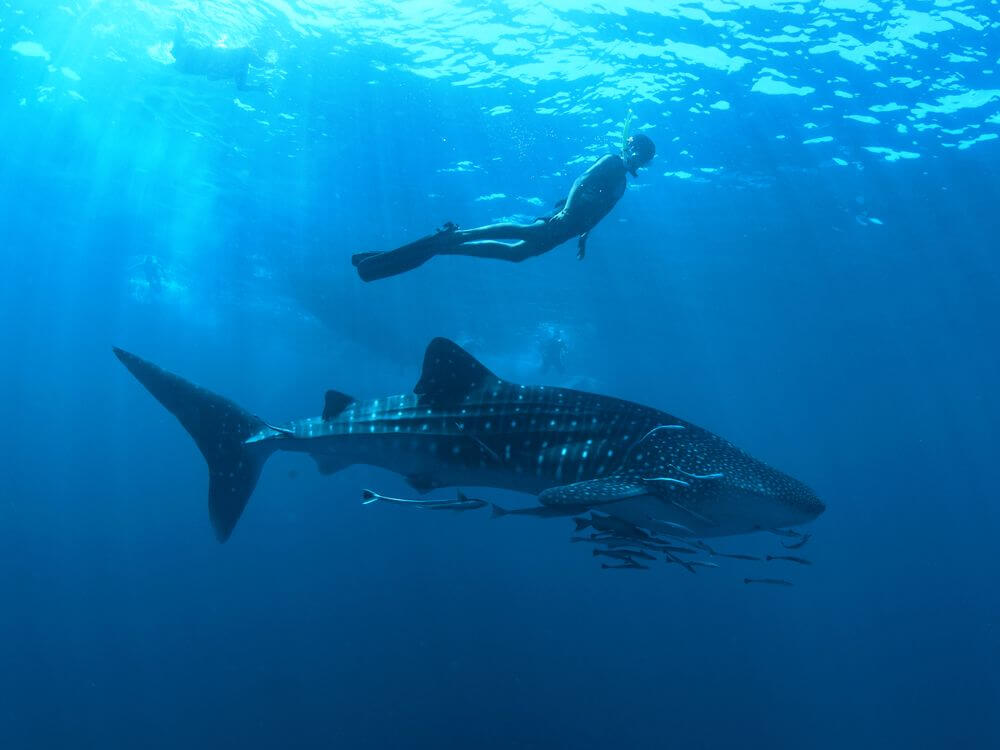
Multiple oceans and currents merge in the aquatic intersection that is Thailand.
Because of this, large pelagics such as whale sharks, manta rays, dolphins and bluefin tuna to name a few, are frequently spotted by divers around Thailand’s best dive sites.
Cheapest Country in the World to Scuba Dive
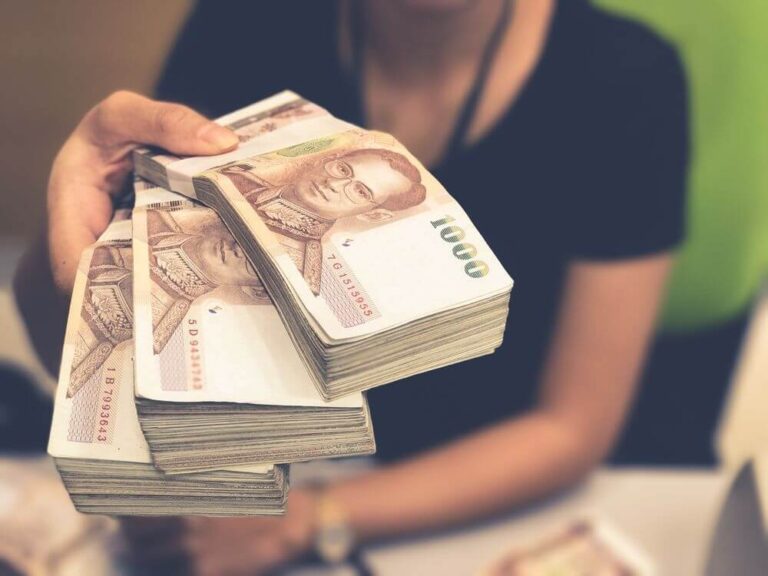
Thailand is one of the cheapest places in the world to scuba dive. Koh Tao is the cheapest place in the world to get open water certified.
Combine this with the already cheap food and low priced accommodation in Thailand, and one can live like a king on the budget of just a petty hedge knight.
Beautiful Culture and People
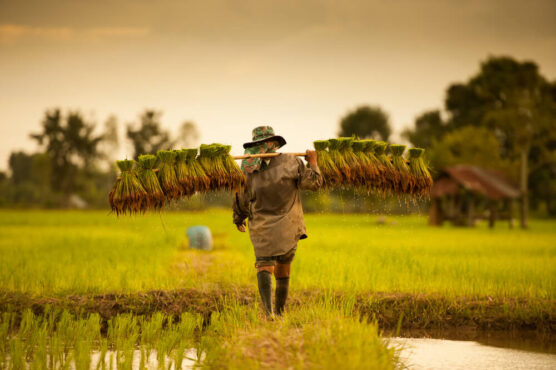
Dubbed the land of smiles, Thailand is home to one of the friendliest and most hospitable populations in the world.
It’s stunning underwater environments are rivalled by it’s pristine white beaches, incredible jungle coated mountains, beautiful temples and welcoming people.
With countless other activities to do in Thailand – from trekking, temples, motorbiking and luxury resorts to volunteering work and yoga expat communities, there is something in this incredible country for everyone.
Thailand may be great for diving but it’s great for so much more as well. Check out this tourist’s guide to Thailand to find out what else you can do there.
Marine Conservation in Thailand
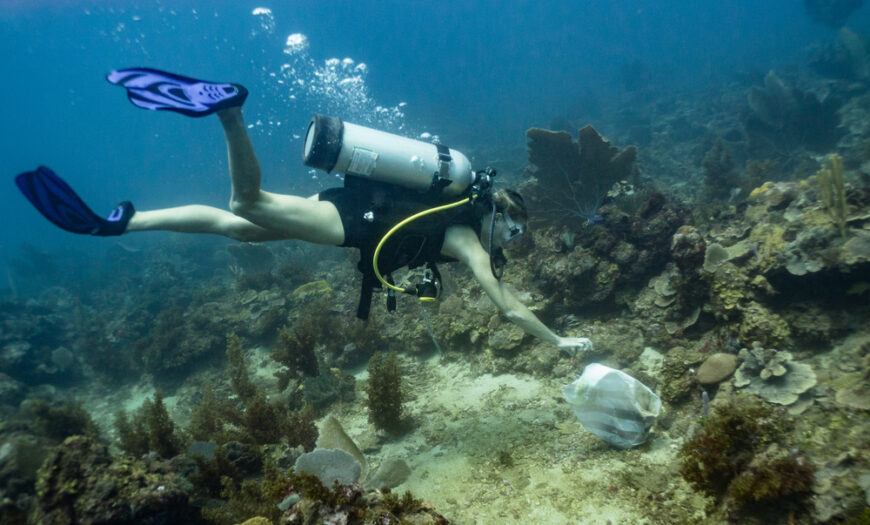
The oceans around Thailand are home to some of the most biodiverse ecosystems in the world.
Stunning coral reefs, charismatic species including turtles, whales and dolphins and lush beach forests can all still be observed in magnificent splendor in this beautiful country. But all is not well.
Over the past four decades, Thailand’s rapid economic development has led to a rise in environmental issues including water pollution, loss of biodiversity and loss of coastal habitats including mangrove forests, seagrass beds and coral reefs.
Tourism, community settlement and port activities have lead to the heavy destruction and loss of mangrove forests and beaches.
Mangrove and beach forests protect coastal habitats from rising sea levels, and without them flooding, coastal erosion and salinization of ground and surface waters occur at a far greater frequency.
Turtles only spawn on the same beach where they hatched, resulting on successive generations relying on the same spawning ground. The loss of such spawning grounds has led to a dramatic decline in their numbers.
Pollution caused by shrimp farming sewage as well as net fishing and trawling and residues from estuaries, means that over half of seagrass beds and corals still remaining in Thailand are now classified as in poor condition.
Without conscious and deliberate intervention by humans, it is entirely possible that we could lose many, if not all, of the marine and coastal ecosystems within Thailand in less than fifty years.
The time to act is now. Here’s what you can do to help preserve Thailand’s marine communities for generations. to come:
Don’t eat Shrimp
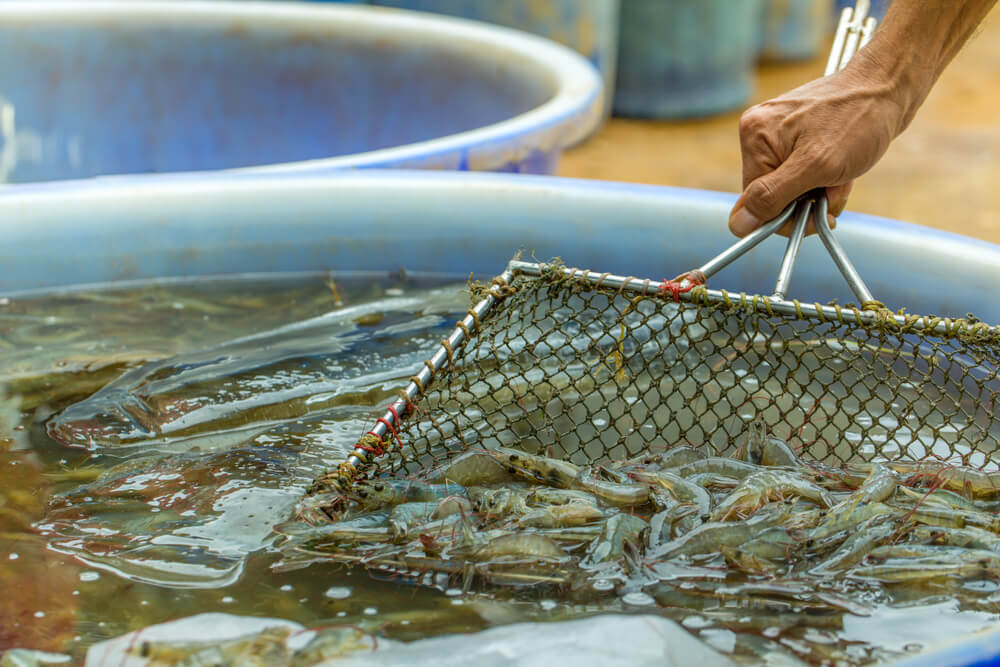
Pollution from shrimp factories in Thailand is one of the biggest causes for degraded water quality which results in the loss of coral and seagrass.
Careful about all Marine Life
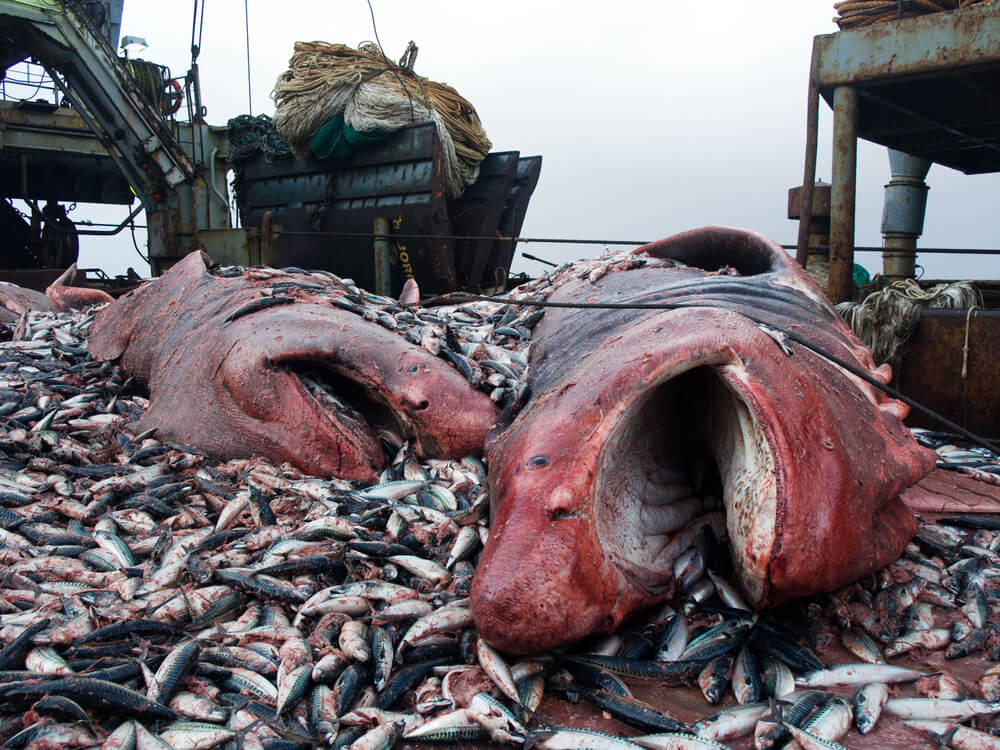
In fact, try and be careful about marine life that you might eat. Does your plate contain sea creatures that were locally caught by line or small net? Great!
Has it been caught by a colossal trawl that was scraped along the bottom of the sea like a rake, tearing up coral reefs and literally impaling sharks, turtles and dolphins along the way? Don’t eat it.
Endangered species like sharks and bluefin tuna are a big no.
Avoid Plastic
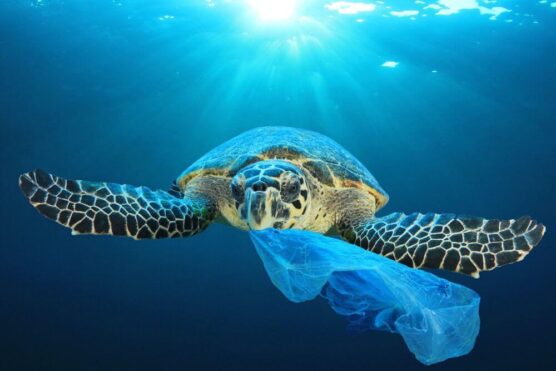
Nine out of every ten plastic items end up in the sea, where they choke up marine habitats, release chemicals that pollute the water and are consumed by sea animals, poisoning and killing them.
Plastic also has serious health implications for humans. For more information on this colossal issue watch the documentary: A Plastic Ocean
Be Mindful Where You Stay
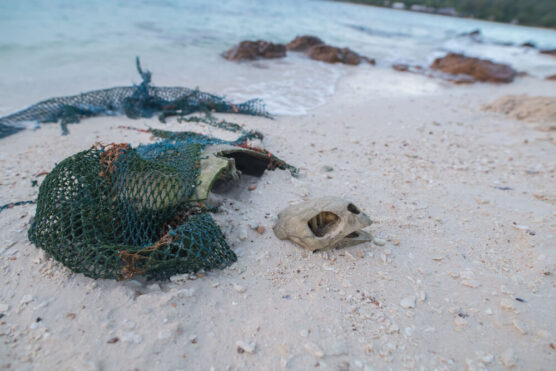
If you’re thinking of staying on a beach resort, research it – what was there before?
Has the resort been constructed in an eco friendly way or has it simply bulldozed over what was once natural habitat with no mitigation actions taken at all?
Many beach resorts have resulted in complete or partial degradation of the habitat where they were built.
Do your research. Know where you are staying and the impact you will have by being there.
Go Eco Diving
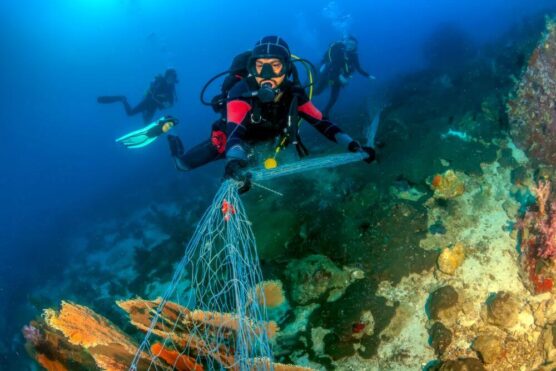
A huge number of dive centres in Thailand are strongly committed to conserving the marine environment through action, awareness and conservation.
You can enrol in eco diving courses where you can participate in dive site cleans ups, marine surveys, coral restoration and more!
Find out more about this below!
Eco Diving in Thailand
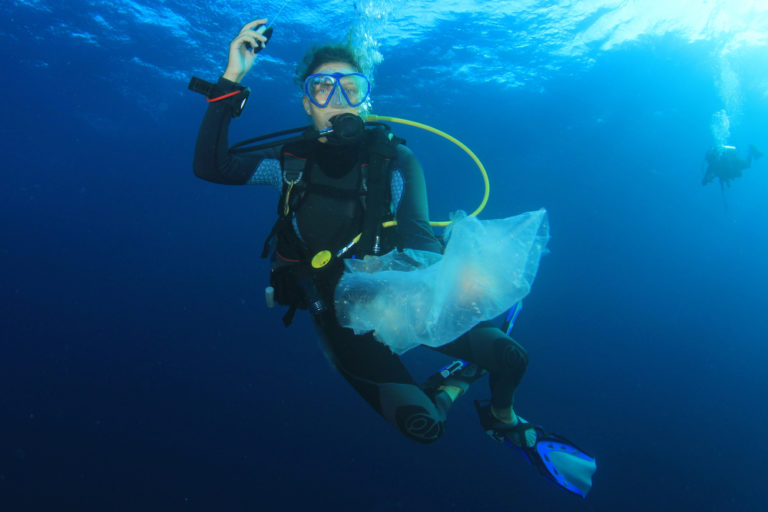
There are countless eco diving projects available in Thailand. These include baby turtle rehabilitation centres, diving surveys, coral restoration, dive site clean ups’ and giant clam nurseries.
Here the three best eco diving experiences in Thailand:
Eco Koh Tao
Now you can sign up with Eco Koh Tao, who not only offer scuba certification courses and eco internships but have a range of exciting projects you can participate in.
These include coral surveys and restoration, dive site clean ups, underwater debris cleanups, eco diving courses, giant clam nurseries and more.
Work with the upbeat and friendly eco crew and you will become part of the family – one committed to preserving and restoring Thailand’s oceans “through awareness, education and direct action” – site ethos. Click the button below to find out more!
Go Eco Phuket
GoEcoPhuket are a collection of dive centres, eco divers, scuba shops and businesses within phuket who are committed to protecting and rehabilitating the marine ecosystem around this stunning island.
They run numerous activities such as beach clean ups’, underwater debri clean ups and coral surveying. In addition you can take on unique diving courses such as the AWARE shark conservation diver speciality course.
Sign up with one of the many dive centres associated with goecophuket, get involved in their many projects and even become a full time member.
Blue Planet Divers
BlueplanetDivers are a 5 star certified PADI, eco operator dive centre in Koh Lanta, and like goecophuket they are also a member of the international group AWARE.
In addition to running beach clean ups and offering diving certification courses as well as instructor training courses, they also have a heavy awareness aspect in which they run educational classes on responsible diving.
Thailand Diving Squad DEBRIEFING:
Diving Squad -at ease! You are now empowered with the knowledge of everything you need to know about diving in Thailand. You are now ready to get out there and dive!
We’ve covered the major diving regions of Thailand and the very best diving destinations, the different diving seasons, insurance, prices, marine conservation and more!
For more information you can check out the following articles:
Support the Squad!
Some of the links in our content are affiliate links. This means that if you buy a product, book a liveaboard, book accommodation or purchase insurance, we earn a small commission at no extra cost to you. Thanks!
